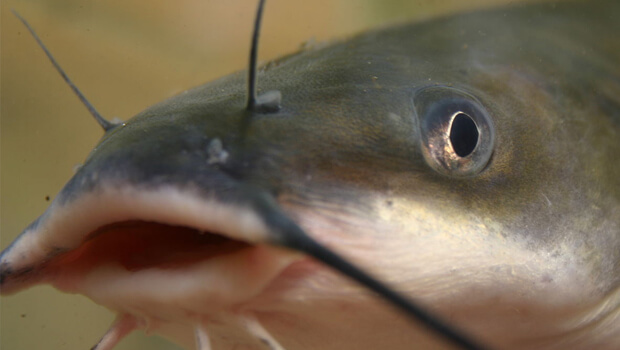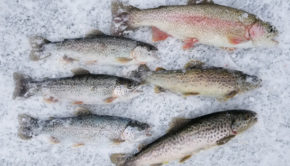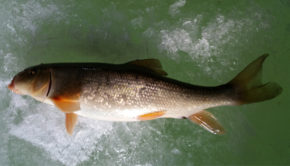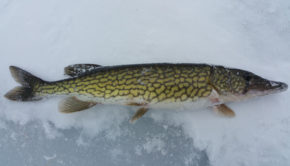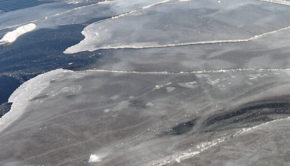How to catch catfish through the ice
Catching catfish through the ice isn’t something that many people set out to do. But it is actually quite possible. You may have ever hooked up with a catfish or two accidentally while ice fishing. Catfish are strong fighters and delicious table fair. That’s why they are one of the most popular fish in America. If you want to target catfish specifically while on the ice, there are some things you can do.
Some people think that catfish go into hibernation when it is cold. That is just not true. They actually feed year round. Anyone who has caught a catfish through the ice can tell you that. But so can all the catfish guides who work on famous catfish lakes like the Santee Cooper reservoirs that never freeze.
Locating catfish under the ice
The main thing when trying to catch catfish through the ice is actually locating the fish. A flasher can only help to a certain degree in this instance. An underwater camera may be able to assist a little more. Ultimately though, you have to have a general idea where the fish are if you want to have a good chance of finding them. Because you can’t just drill a hole every three feet and drop a transducer down.

If you know the layout of the lake your fishing you can combine that with knowledge of catfish behavior and find fish wherever you are. As the water cools catfish often head for the depths where they can find more stable conditions. But they will also station on ledges near channels and congregate around any big clumps of dead native fish such as shad. If the water temperature drops down into the 30’s then the catfish may actually go somewhat inactive for a while. But this inactive period rarely lasts long.
Ice fishing reviews is reader supported. When you buy things through links on this site, I may earn a commission. Thank you!
Ice fishing for catfish
Once you get set up over some catfish, the next thing to do is drop bait and start fishing. People have been known to catch a good amount of catfish using jigging spoons like this Cotton Cordell C.C. Spoon tipped with live bait. But in the cold waters of winter, slower is almost always a better approach. You will still want to use live bait though. If you are allowed to use small native fish from the lake you are fishing, do it. Catfish will already be keyed in on those fish. You can also use dead bait or cut bait. Fish it stand up style a few feet off the bottom if you don’t mind waiting for bites. Or use a tip up with a treble hook through the upper back of a shad or herring.
There are often big kills of fish like shad in lakes during the winter. Even stocked trout can die off in some numbers. Obviously you have to follow the laws wherever you are, but if you can fish with what the catfish are eating you are on the right track. If not, just use whatever live or cut bait you can. You don’t necessarily have to fish with a big bait. A lot of times small bait will work better, especially in the winter. Catfish are opportunist feeders and they will often pick up whatever than they can get into their mouths easily.
Dead bait can work well for most catfish, especially in the winter. Catfish are cold blooded, and they slow down as the water temperatures sink. Their metabolism also slows, which means they don’t have to eat as much. But they do still need to eat. They will conserve their energy as much as possible. They don’t want to burn off a lot of calories chasing down a lively fish that they may not even catch. If they can get a piece of food without struggling that is good for them. That’s the key to the success of using dead or even just injured or cut fish under the ice.
Landing catfish through the ice
Keep in mind that catfish can be big. A lot of times they will be bigger than your hole, especially if you are drilling with a small auger with a drill bit of just 6 or 8 inches. So if you are seriously targeting catfish you have to take this into consideration. In many places there are limits on the size of the hole you can drill. But you normally want to go as big as you can. Even then you can have problems. Catfish also tend to extend their fins when hooked, which can make it tough even to get the fish through holes with large diameters.
It pays off to be prepared in advance rather than scrambling around trying to figure things out when you’ve already got a big catfish on your line. Where permitted, you can use a landing tool like this SAN LIKE Telescopic Fishing Gaff but only if you plan on keeping the fish you catch. There is no room for catch and release with a gaff. You can’t just change your mind and try to revive a fish once you have stuck it. The fish will die. If you are committed to catch and release fishing than you’ll just have to try to grab the fish with your hands, because it is unlikely your line will be strong enough to pull the fish up and out of the water without breaking. Just of think of it like the colder northern version of noodling!

